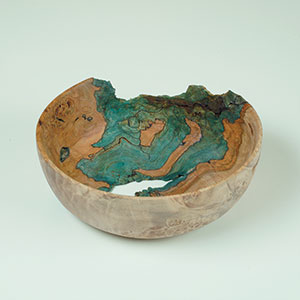A Short History of Styles and Forms

Furniture design has seen many styles and forms throughout its rich history, from the rectilinear designs of the Arts and Crafts movement to the instantly recognizable Windsor chair. Furniture makers and designers have set new trends across continents and centuries that have stuck with us in the modern age.
Art Deco
The name Art Deco derives from an exhibition that took place in Paris in 1925 — Exposition Internationale des Arts Décoratifs et Industriels Modernes — although for a long time the style was known as Jazz Moderne, Streamline Moderne, or simply Moderne. The exhibition highlighted the work of numerous designers who were reacting to the emphasis on individual craftsman pieces and the perceived fussiness of Art Nouveau, and instead were seeking something modern and streamlined that would take advantage of new materials and at the same time be less expensive.
Art Nouveau
After a century of commercially inspired revival styles, various designers in late 19th-century France were working to produce something entirely new and modern. The Art Nouveau style derived from a group of French designers who were adding motifs from nature to produce furniture that was both new and well made, and which also employed flowing shapes and lines.
Arts and Crafts
The Arts and Crafts movement began in late 19th-century England as a reaction against shoddy mass-produced furniture. Inspired by the writings of critics and designers such as John Ruskin and William Morris, several generations of furniture makers on both sides of the Atlantic developed a style based on honesty of design, good workmanship, and utility.
Bentwood
Seldom have one man and one construction technique become so successful as Michael Thonet and his bentwood furniture. This unique and universally recognizable style of furniture first appeared in 1836 and continues in production to this very day. Beginning with chair production and eventually including a variety of other furniture types, Thonet is also to be credited with having played a very large part in changing furniture making from a handcraft practiced in small shops to an industry based on factory mass production.
Biedermeier
One of the better known styles of the first half of the 19th century, Biedermeier furniture, which originated in Germany, is unusual in that the style is named neither for a reigning monarch nor a dominant maker, but rather derives from a pseudonym used by various German poets.
Modern
Modern may be taken to refer to all furniture not clearly made in a period style or, more particularly, the furniture of the early 20th century. The forces and influences that produced the furniture made in this latter period have their origins in the Industrial Revolution and the changes it wrought in society’s furniture needs, manufacturing processes, and commercialism.
Post Modern
In the last quarter of the 20th century, the design pendulum once again swung the other way, away from the stark functionality of the so-called Modern style. A group of designers in various places, bored with what was perceived as the often sterile and austere sameness of what had become known as the International Style of architecture — exemplified by virtually identical box-like skyscrapers all over the world — began to focus more on expression and individuality. At the heart of Post-modernism were various Italian designers interested in decoration, surface appeal, and the exploration of historical references as a way to redefine the present. It became fashionable to use bright plastics next to expensive veneers, to mix hand-painted surfaces with contrasting fabrics.
Rustic Furniture
Rustic furniture may be thought of as a type of country furniture in that it is often unsophisticated, and made by local, country craftsmen rather than by trained city cabinetmakers. Its chief characteristic, however, is that it tends to be made from unplaned wood; legs, arms, and other parts of chairs and tables, for example, being formed by twigs and branches of the appropriate size.
Shaker
Shaker furniture is not only a unique American style, but also one of the most recognizable and popular styles of the last 150 years. Its apparent simplicity — a result of the Shaker ethic that eschewed gratuitous ornament — often obscures an inherent grace and purposeful form that is as much the result of the traditional training that many Shaker cabinetmakers had received in the outside world before converting as of any religious proscription.
Windsor Chair
Strength belying its delicacy is the hallmark of a Windsor chair (and other variations such as the settee), a trait it derives from the wet-dry joinery and the long, unbroken grain of the drawknifed, not sawn, pieces. Unique to the Windsor form is its joinery in which kiln-dried tenons are fit into wet mortises, creating an ultra-tight fit once both parts acclimate. Much of a Windsor chair’s alluring grace is found in the seat, particularly in the S-curve on the side. Also characteristic of the Windsor chair are its turned, splayed legs and spindle back.
Graham Blackburn is a furniture maker, author, and illustrator, and publisher of Blackburn Books (www.blackburnbooks.com) in Bearsville, N.Y.
Fine Woodworking Recommended Products

Dividers

Sketchup Class

Stanley Powerlock 16-ft. tape measure





















Comments
We are well overdue for an Art Nouveau revival.
Log in or create an account to post a comment.
Sign up Log in